For SaaS companies, digital marketing is one of the key drivers to growth.
Between raising awareness of new products, producing thought leadership content, and generating sales leads, technology companies spend billions of dollars a year trying to find the right marketing mix.
But what’s the state of tech industry marketing spend, and how is it likely to change in the years to come?
Marketing in the technology industry, whether it’s B2C consumer apps or B2B SaaS platforms, is unique from other industries in many key respects. And, extraordinary content marketing is undeniably key to selling your product, service, or software.
Currently, tech software companies spend around 15 percent of their annual budgets on marketing, only second to the consumer goods and consumer services industry.
The evolution of marketing technologies like automation platforms and social listening has also made tech marketer’s jobs that much more challenging when it comes to deciding where to allocate budgets and resources.
Video must not be overlooked as a key strategy moving into 2023. Navigating a post-COVID, hyper-digital world that is more and more engaged in video content is difficult, but data is your compass. And, with the national average attention span gradually declining, its important to ensure you’re engaging your SaaS company’s entire audience, not just a segmented niche.
That’s why Insivia has created our 2023 SaaS Marketing Report, to take a deep dive into the data about what’s important to tech marketers.
Why Marketers Are Paying Attention
87% of marketers are currently using video as a marketing tool and 85% of those believe that it is an essential part of their strategies. (Wyzowl)
94% of marketers say using video content has helped increase user understanding of a product or service. (Wyzowl)
83% of survey respondents say video gives them a good return on investment. (Wyzowl)
49% of marketers say that visual marketing is a very important component of their marketing strategy. (Venngage)
71% of marketers say they have seen an increase in website traffic after starting a content marketing program (Content Marketing Institute)
In 2023, 79% of non-video marketers (up 10 percent from the previous year) said they plan to begin utilizing video as a marketing strategy.
46% of marketers started using video marketing for the first time in 2021 due to the ease of creating videos in-house.
66% of firms used videos to communicate with important stakeholders throughout the COVID lockdown, and that stat hasn’t changed much.
Software Companies Make A Big Move Towards Customer Experience
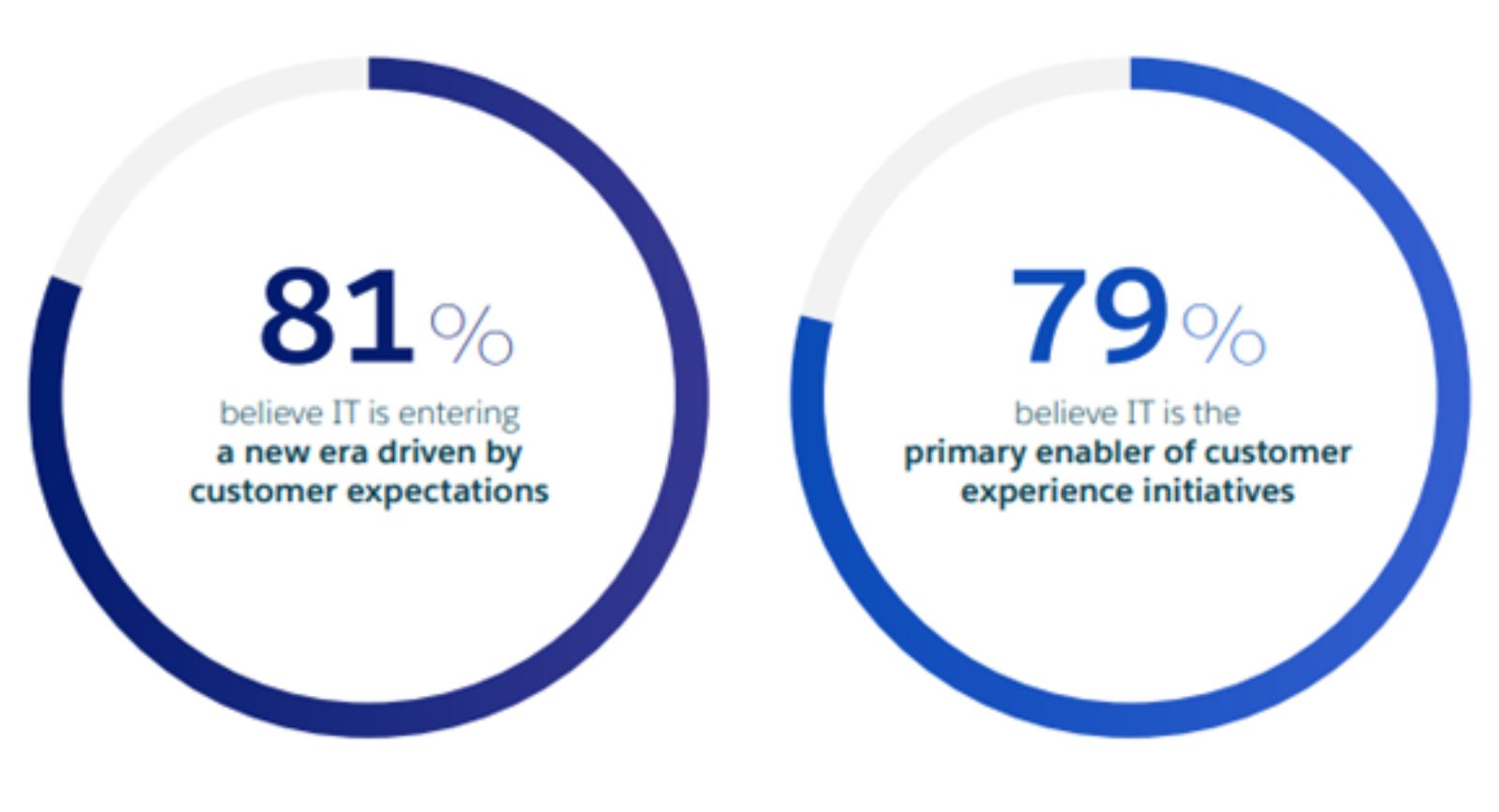
2017 State of IT Report Salesforce
B2B Marketers Spotlight
They’re loading up on eMail.
30% plan to increase spending during the next year.
eMail is seeing the most ROI.
68% said it is their most effective digital channel.
Hard dollars are everything.
82% focus on sales and leads as their primary metrics.
They could be scaling more efficiently.
Only 40% are using eMail Automation.
2018 eMail Marketing Industry Report
How you decide to allocate your marketing strategy will obviously depend on your situation. When deciding how to allocate your budget, it’s important to prioritize your goals and challenges and work with a marketing partner to identify which strategies, tactics, and technologies are most appropriate.
No matter what, you should do the following:
Build A Solid Brand
A brand is not just a logo. You should clearly define your value propositions (what makes you different), positioning statements, key messages, and brand voice to create a clear and consistent marketing as well as sales approach.
Understand Your Audience
One of the most important aspects of sales and marketing is to prioritize audiences and develop detailed personas to understand customers. Starting with pains, drivers, and buying factors is the minimum that every SaaS company should have written down.
Create A Marketing Strategy
A strategy is different than a plan. A strategy needs to align audiences with tactics in an intelligent measurable approach. Any smart marketing strategy is about small targeted campaigns combined with valuable brand awareness.
Never get trapped in trying to guess or just do marketing randomly – this is a sure failure.
Have A Plan
A strategy is not a plan and a plan is its own entity. Define specific tactics, messages, budgets, calendars, KPIs, and other elements that make a smart strategy actionable.
Measure & Optimize
We exist in a world that allows us to track everything and produce intelligent reports on activity. Measurement, testing, and optimization must be a constant activity built into our marketing plans.
A regular assessment of your brand, website, and marketing should be a required process for any company that is looking to scale.
Offering a “free month” may be more effective than offering 10% off the renewal price, even though the latter is technically a better deal.
The Ultimate Marketing Plan for SaaS Businesses
The ROI of Marketing in SaaS
Technology and SaaS companies engage in a broad variety of marketing tactics, depending on the industry and customer base they serve. This typically includes (but is not limited to):
- Blogs
- Search Engine Optimization (SEO)
- Case Studies, Customer Testimonials
- Webinars
- Events
- Social Media
But before deciding where to invest and allocate budgets, how do technology marketers approach analyzing which tactics and channels will yield the highest ROI? According to recent data, statistics, and research, here is how technology industry marketers are approaching targeting their segmented audiences strategically…
Funnel Conversions
The rate at which marketing leads convert to sales is one of the most important metrics.
Funnel Velocity
It’s not just how many marketing leads convert, it’s about how rapidly they move through the sales cycle towards becoming actual customers.
Content Productivity
Tech companies are constantly creating content, so any marketing technology or tactic that helps streamline this process in terms of either cost or time provides significant ROI.
Revenue-to-Cost
Many marketers aim for a 5:1 revenue-to-cost ratio, meaning that for every one dollar spent on marketing, five dollars worth of sales should be directly or indirectly generated.
Overall Efficiency
Around 80 percent of marketers say that they value technologies like marketing automation, as they improve the overall efficiency of their marketing efforts.
Customer Acquisition Cost
One of the most important marketing (and overall) metrics for technology companies. The goal is to optimize how much marketing muscle is needed to acquire each additional customer.
Web Traffic
A longstanding but still effective, measure of marketing ROI for tech companies. Whether it’s social media campaigns or live events, driving to-of-funnel web traffic is still a top priority, and one of the key ROI metrics used by tech companies.
Lifetime Customer Value
In tech and SaaS, companies want to grow with their customers. That could mean selling additional licenses, services, or add-ons. Tech companies now aim part of their marketing at current customers, so that their lifetime value will increase steadily over time.
Site Conversions and Brand Engagement Rely on Video
Video content on e-commerce websites can increase conversion rates by up to 80%. (Nexcess)
Social media posts with videos attract twice as much engagement than image posts alone. (Buffer)
On average, consumers spend 2.6x more time on pages with video content compared to pages without any video content. (StoryTrack)
Video searches have a higher click rate (41%) than other first-page results.
Adding a product video on your landing page can increase conversions by 80-86%. (Promo)
Video content on e-commerce websites can increase conversion rates by up to 80%. (SellBrite)
Research shows that B2B companies using videos in email marketing have increased click-through rates by up to 300% (Oberlo)
86% of video marketers claim that video is successful in generating leads.
Explainer Videos for your SaaS Conversion Rates
Over 50% of users view explainer videos before purchasing a service or product. (Oberlo)
Explainer videos are capable of increasing product sales by 20%.(Hubspot)
83% of B2B businesses use explainer videos as part of their digital marketing strategy for lead generation. (Wyzowl)
Over 50% of users view explainer videos before purchasing a service or product. (Oberlo)
To understand more about a product or service, 96% of consumers have seen an explainer video. (DemandSage)
Animated explainer videos increase conversion rates by 20% according to Unbounce.
Video Content Marketing Strategies for your Business
Your Target Audience Expects Video and Smart Content Marketing
59% of executives agree that if both text and video are available on the same topic, they prefer to watch a video. (A-ray)
62% of global B2B buyers consume content before making a purchase decision (Demand Gen Report)
92% of mobile video viewers share videos with others (Invodo)
78% of consumers claim that seeing a video influenced them to buy or download a piece of software or program.
Content marketing generates 3x more leads than paid search ads (Digital Information World)
64% of people are more likely to buy a product after reading about it (Impactbnd)
53% of B2B marketers are investing very heavily in content marketing (Content Marketing Institute)
90% of users find visual information more appealing when researching products online (Venngage)
86% of B2B companies use content marketing as their primary source for lead generation (Content Marketing Institute)
88% of respondents claim that seeing a brand’s video influenced them to purchase a good or service.
Why are Marketers Utilizing Video?
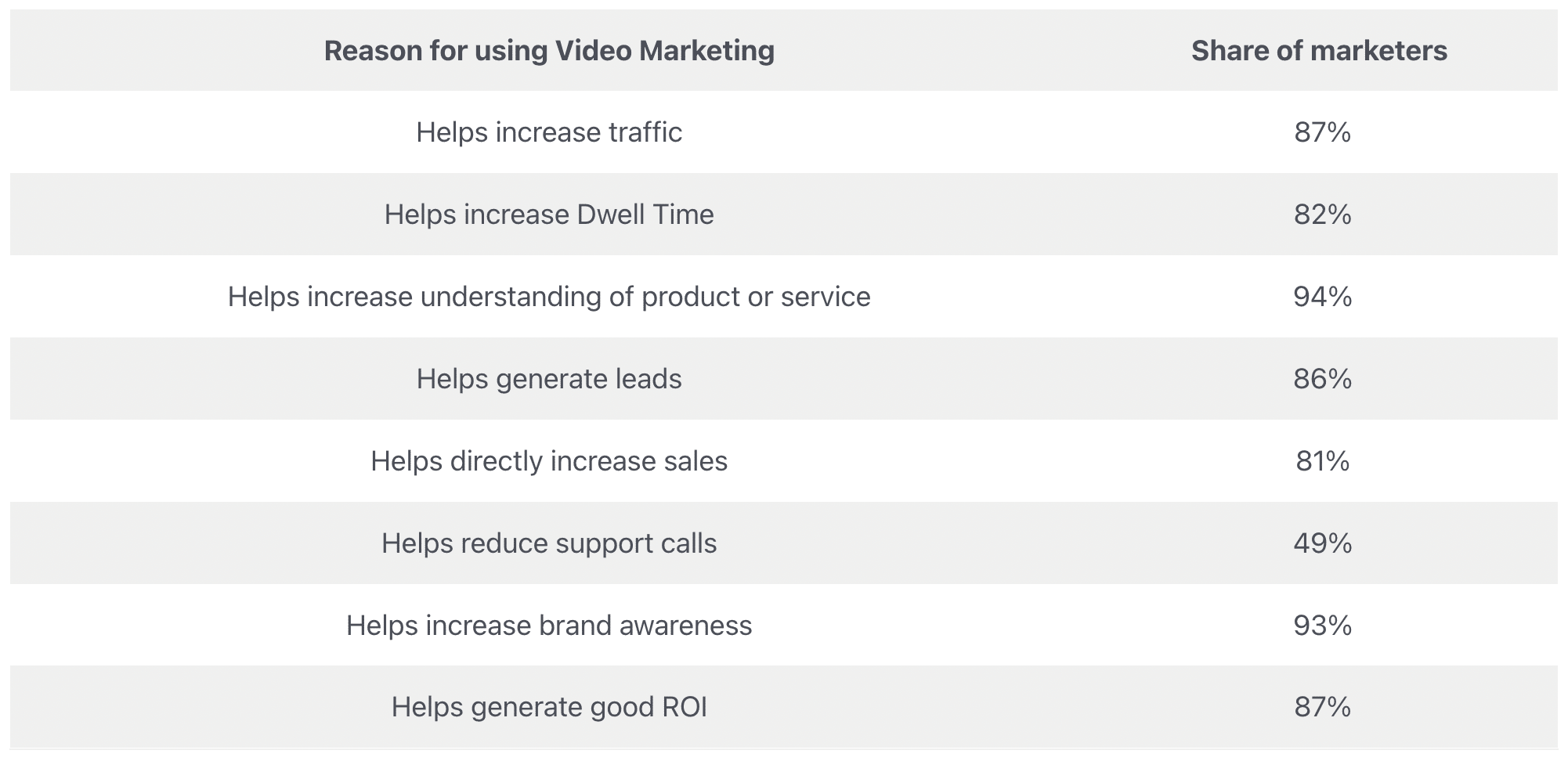
Perceived level of ROI generated by selected digital marketing channels according to marketers worldwide
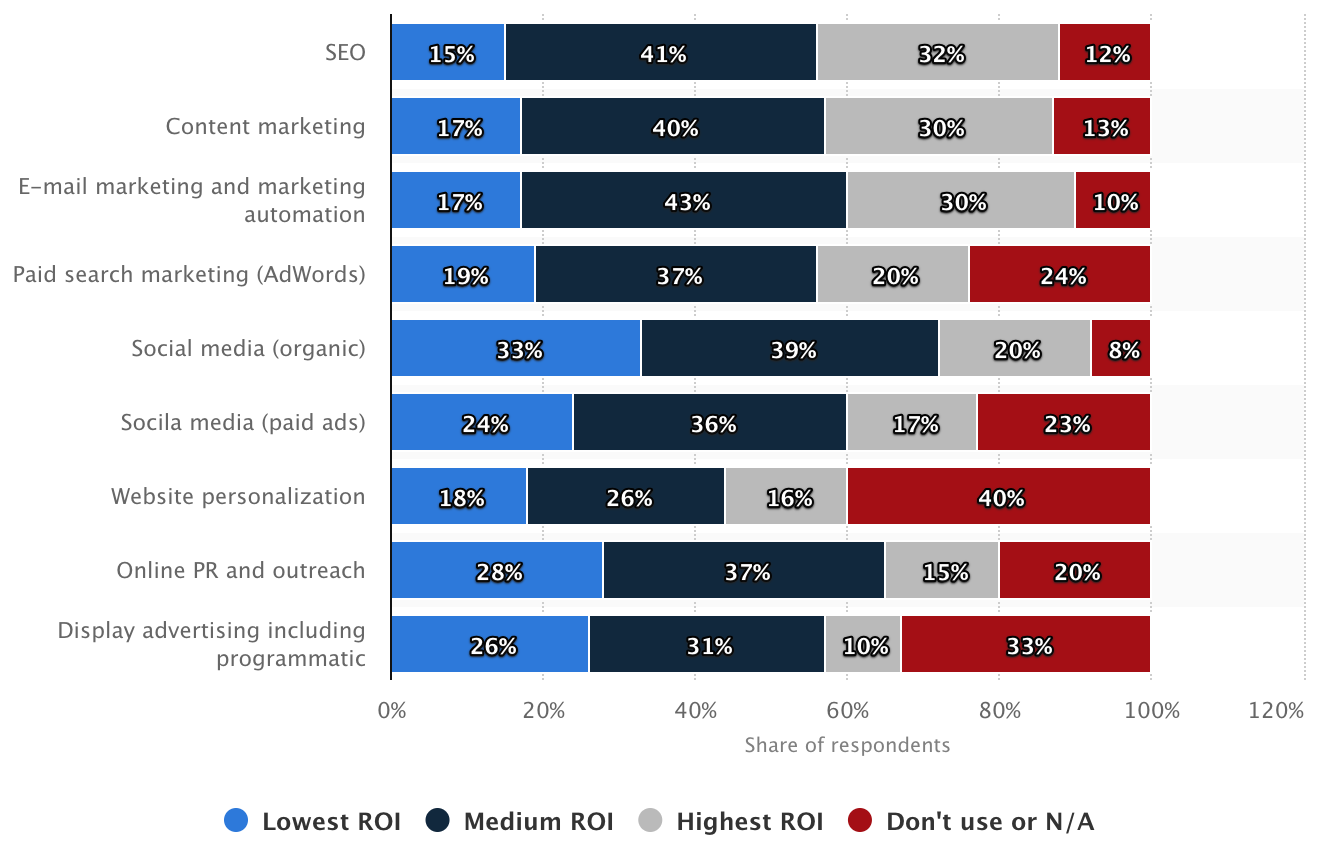
https://www.statista.com/statistics/736848/roi-digital-marketing-channels/
Each day 100 million internet users watch an online video.
75% of executives watch work-related videos on business websites at least once a week.
79% of consumers prefer to get to know the company via articles instead of ads (Demand Metric)
According to ComScore, the average user spends over 16 minutes watching online video ads every month.
77% of businesses report that their content marketing efforts have increased engagement rates with customers and prospects (Ascend2)
67% of customers prefer and engage with promotional content that includes visuals such as images, GIFs or videos over text alone (Hubspot).
After watching a video, 64% of users are more likely to buy a product online, according to ComScore.
1/3 of all online activity is spent watching video.
92.7 percent of global internet users worldwide watch digital videos each week
45% of viewers will stop watching a video after 1 minute and 60% by 2 minutes, according to Visible Measures.
Viewers retain 95% of a message when they watch it in a video compared to 10% when reading it in text.
4 out of 5 users will click away if the video stalls while loading according to Google.
Typically, a marketing budget ranges from 10 to 40 percent of the forecasted annual recurring revenue; however, successful SaaS companies often invest between 80 and 120 percent of their revenue in sales and marketing.
SaaS Marketing Allocation
Now that we know the reasons why marketing is on the uptick for technology and SaaS companies, let’s dig into how specifically they’re allocating their budgets, time, and resources. First, it’s important to understand some specifics of the customers they’re selling to.
When selecting a new vendor or partner, the most (44 percent) of prospects said that pricing information was the most important marketing tactic for making their selection.
However, several key marketing tactics also played a big role, such as Product Spec Sheets, Free Trials, Videos, and ROI calculators. With that in mind, technology companies are challenged to find the right marketing mix to get the most bang for their buck.
With all that being said, it’s clear that Content Development is where companies are spending the majority of their marketing budgets (66% of companies said so), closely followed by SEO (62%) and social media marketing (42%).
All three of these areas represent “top of funnel” activities, mostly designed to generate leads, awareness, and thought leadership. To move these leads along the sales pipeline, tech companies are also investing a substantial part of their budgets in Marketing Automation (39%) and Email Marketing (37%). Having a process to nurture leads, and re-market to them via email is highly valuable in the SaaS and technology space, as some leads may take weeks, months, or even years to finally mature and be ready for a sales cycle.
Live Event Marketing and Webinars aren’t going anywhere just yet, with 34 percent of companies saying it’s their biggest budgeted marketing channel. If your industry has many trade shows or conferences throughout the year, it may be a good investment to meet prospects face-to-face and get them into the sales funnel much more easily.
Where Tech Companies Are Spending Their Marketing Dollars
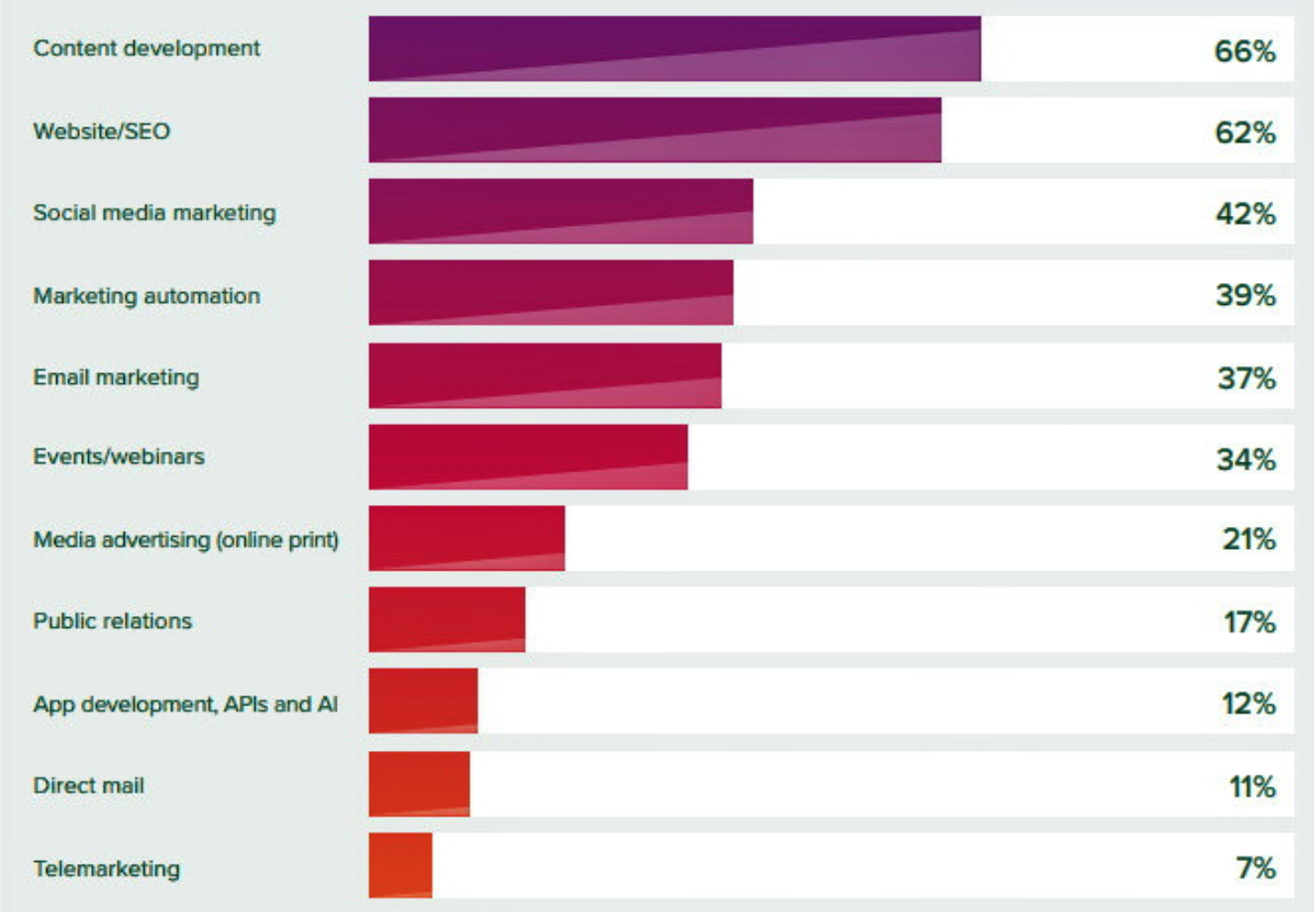
https://www.technoledge.com.au/b2b-blog/marketing-hi-tech-how-much-do-competitors-spend
Text-Based Content
Content marketing campaigns are a multi-functioning part of a marketing campaign. They offer information about the values and feel of the company, as well as information about the product itself. This includes a company’s blog, email and social media content, and downloadable content, such as ebooks and whitepapers.
While text-based content continues to be an important part of the content marketing ecosystem, more users are consuming digital content than ever before. As a result, many SaaS brands are taking advantage. For instance, nearly one-fifth of the biggest SaaS companies have their own podcast.
Podcasts
While podcasts are an expensive investment, they hold the promise quality time with your target audience. According to Digiday, branded podcasts are “bucking the trend” of a historically low rate of branded content renewals. SaaS companies are now recognizing that podcasts and live streaming can easily complement existing video content such as webinars, tutorials, and testimonials.
Video
People are consuming video at much higher rates in 2023 than in previous years. 82% of all consumer Internet traffic will be video traffic.
In general, ignoring content in all forms (video, podcasts and the like) is a costly SaaS marketing mistake.
Finally, technology and B2B companies are shifting some marketing investment to help build out internal competencies through continuous training and knowledge building. Spending on developing knowledge about how to do marketing is set to increase by around five percent, with an over four percent increase in marketing training. It points to how important it is for technology companies to have competent internal marketing staff, not so they can necessarily do all of the heavy lifting, but can work more effectively with agencies, technology partners, and the like.
According to the State of Pipeline Marketing Report, 82.1% of marketers use content marketing to generate demand – because it works.
Video Content on Social is a Major Advantage
Depending on what your SaaS company’s product, software, or service is, utilizing one or all popular social media platforms can be a major advantage with high ROI and low costs.
Social media is an invaluable tool for B2B SaaS marketing. By creating meaningful and engaging content, businesses can build relationships with customers, increase brand visibility, and create an effective sales funnel.
Social can be used to promote special offers, gather feedback from customers, and track company performance in real-time… All of which can be easily achieved through constructive content marketing, and in particular, strong video marketing.
Rank The Following Areas In Order Of Priority
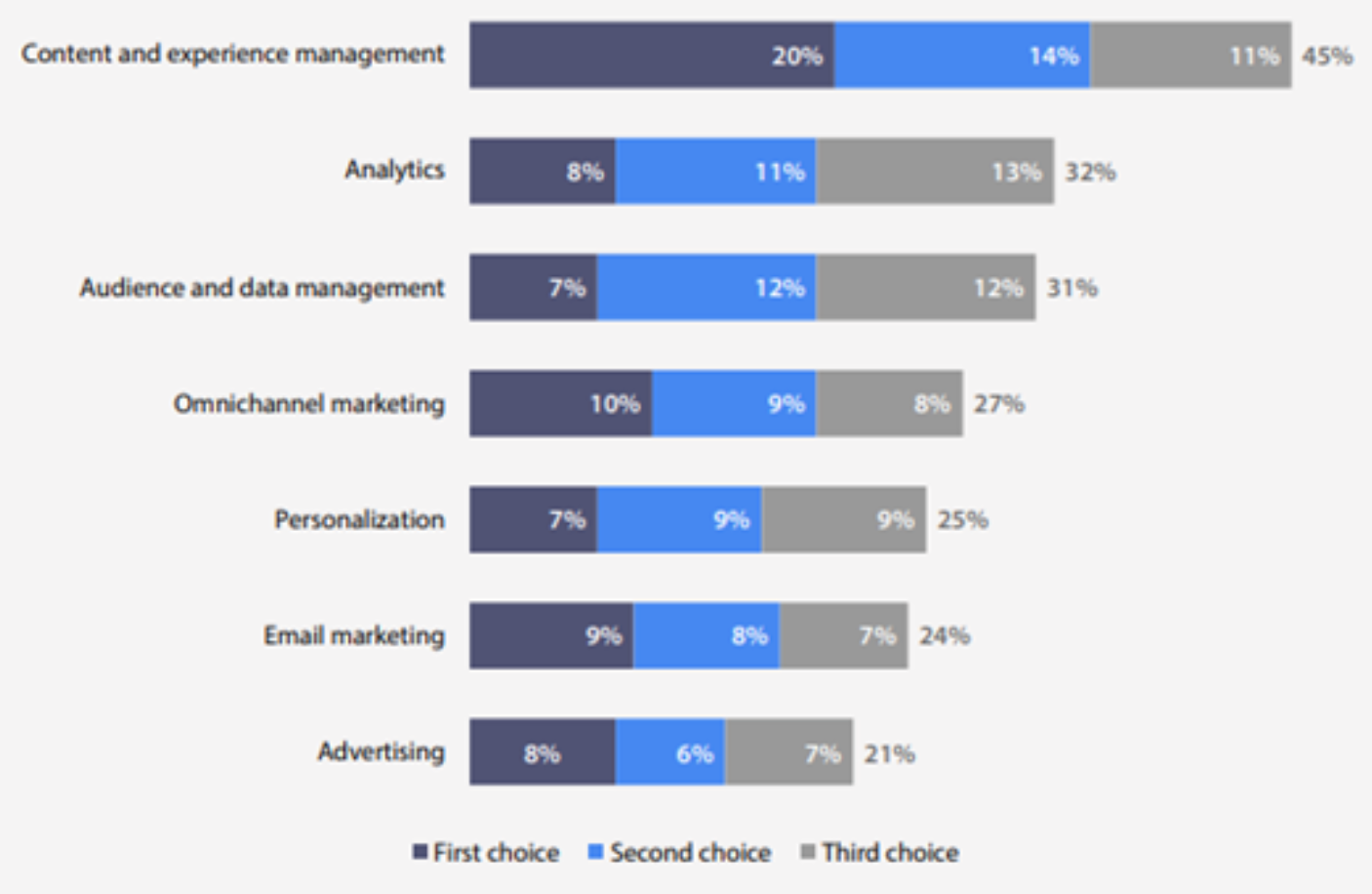
Instagram sees over 2 billion monthly active users (as of Q4 2022) and they all interact with the Reels feature (short form video content). With over 500 million daily active users, the platform expects to see an increase of half a billion MAUs in 2023.
Video content is hyper shareable and easily accessible for posts on Instagram, with Stories, IGTV, Reels, and even regular feed posts.
TikTok
TikTok has almost 1.4 billion monthly active users, with users watching over 1 billion videos on TikTok daily.
Advertisers can reach approximately 885 million people who are at least 18 years old.
Creators can now share 10 minute-long TikToks.
79% of Facebook’s MAUs are DAUs and 72% of Facebook users also use YouTube and Instagram.
Facebook is the most preferred social platform by people aged between 35 to 44.
Facebook has also taken part in the drive for short form video content with their own Reels feature with 42.6% of the users sharing in live video.
LinkedIn has over 840 million users with almost 60% of people between the ages of 25 and 34.
LinkedIn’s most successful advertising is sponsored posts, which you can sponsor videos!
LinkedIn is arguably the best platform for B2B marketing, and compared to conventional videos, LinkedIn live broadcasts produce seven times more reactions and 24 times more comments for company posts.
LinkedIn users are 20 times more likely to share a video post.
YouTube
YouTube has over 2.5 billion active users and is regarded as the world’s largest video-sharing network.
YouTube users watch 1 billion hours of video daily; the average YouTube user is between the ages of 25 and 34.
YouTube additionally hs a Shorts feature to publish and share short-form content.
Important Goals for Marketers Over The Next Few Years
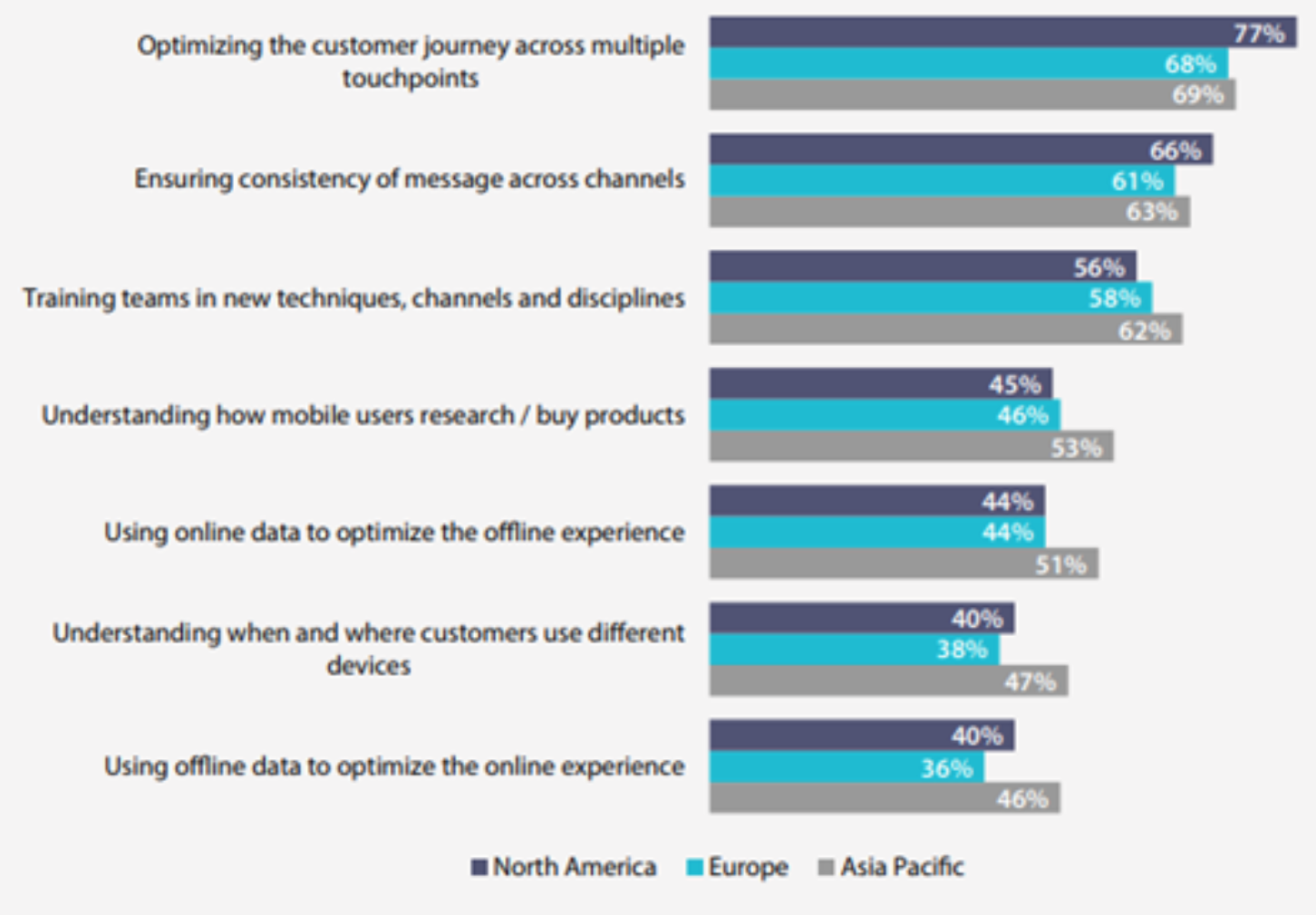
Key Takeaways
Software companies are spending a higher percentage of their overall budgets than ever to increase brand awareness, generate consistent leads, and meet their target buyers on channels and platforms in the most targeted way possible. Here are some of the key takeaways from our report that any technology or SaaS company should keep in mind when thinking about how to allocate their marketing spend for the remainder of this year and beyond:
- Clearly define your overall business goals and work backwards towards implementing the right marketing mix that gives you the best chance at achieving those goals or overcoming your biggest challenges.
- Understand the ROI of various marketing strategies, tactics, and platforms carefully before diving in head first. Focus on developing powerful marketing capabilities over time that will generate consistent ROI, rather than focusing solely on short-term costs.
- Most likely, your competitors are ramping up marketing spend at a rapid rate year over year. While you want to keep pace, think about how to allocate your efforts towards both gaining new customers, as well as retaining and upselling existing ones.
- While content marketing remains perhaps the biggest focus for tech companies, don’t ignore more traditional tactics like email marketing. Tech companies are investing more in internal training, something you should also focus on in order to build some level of in-house capabilities.
- It’s no surprise that tech and SaaS brands are spending more on MarTech, with marketing automation platforms leading the way. But as you add new technologies and software, be aware of how those systems will interface with existing ones and have a plan to integrate them as tightly as possible.
- Artificial intelligence, AR/VR, and big data analytics are just a few of the areas that are expected to experience significant growth and usage for tech companies in their marketing budgets. Work with your digital marketing partner to see which new technologies might be best for your business, and place the appropriate ones on your budget roadmap .